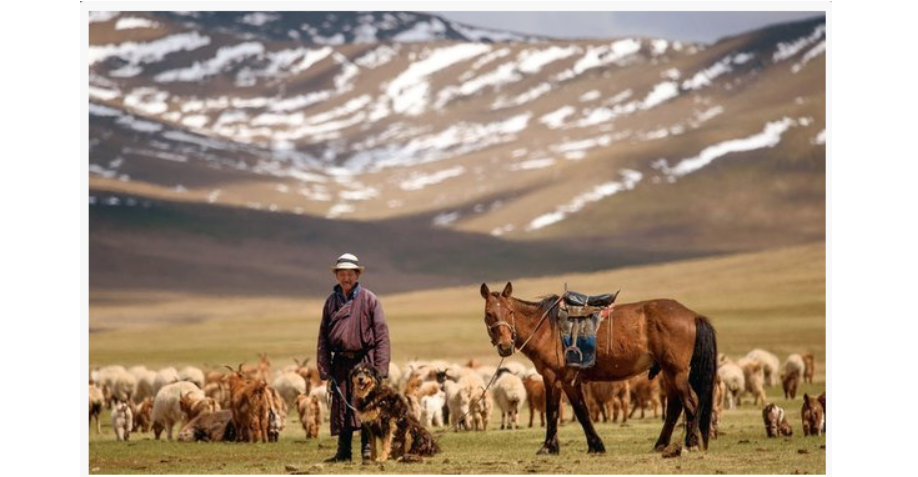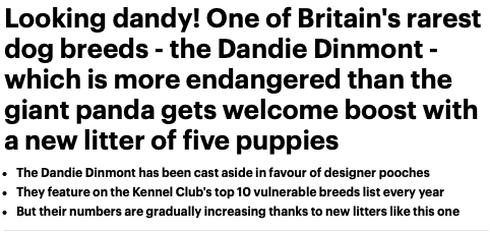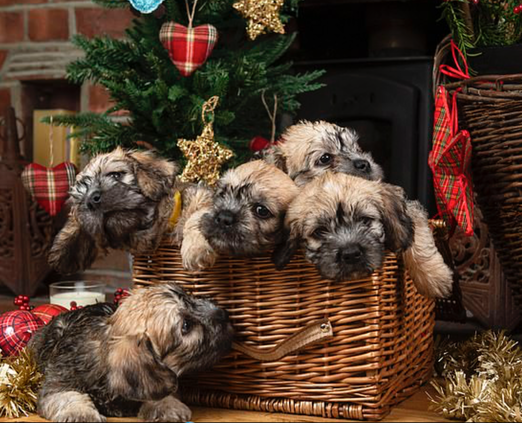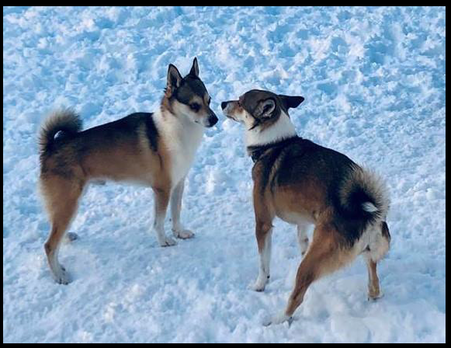There is growing awareness now that many of these breeds are becoming rare and run the risk of disappearing entirely. The UK Kennel Club recognized this possibility a few years ago and created a list of native breeds that are vulnerable to extinction because of declining numbers. In some breeds, the numbers haven't moved much or continue to decline, but in others the heightened visibility has resulted in an increase in the number of puppies produced.
The Dandie Dinmont Terrier is one of the breeds on the vulnerable list, with numbers produced per year hovering between about 80 and 150 per year since 2010. So the birth of a litter of 5 adorable little pups just in time for the holidays is cause for celebration and noteworthy enough to make the news.
Also celebrating are the folks at the Mongolian Bankhar Dog Project. While all is bleak and frigid on the Mongolian plateau, they are welcoming the arrival of 11 new puppies that will be placed in about 2 months with one of Mongolia's nomadic herders. Each will puppy be introduced to the livestock, grow up as a hoof-less member of the herd, and serve as their protector for the next decade or more. The Bankhar Project is bringing these dogs back from the brink of extinction by replacing guns with these traditional Mongolian livestock guarding dogs, allowing the herders to coexist peacefully with the snow leopard, wolves, and other native predators. By the way, that whelping box is not in a cozy abode in the middle of the spare room. It's a hut outside and it's bitter cold. These pups are coming into the world as they have for thousands of years, ready for the weather and with no expectation of napping on the sofa. I haven't verified this yet, but I'm betting that the "fog" you see puffing in the video is the condensation of the warm breath coming from behind the video camera.
Also in the frozen north, the Norwegian Lundehund Club is readying for the production of the first backcross generation in their breeding program to save the Lundehund from extinction. The dam is Lundhund x Buhund cross and the sire is a Lundehund. The F1 dogs were healthy and very much resembled Lundehunds, retaining almost all of the unique anatomical features of the breed (polydactyly, ability to close the ears, extreme flexibility). The progeny of the backcross should produce pups that are even closer to breed type.
We celebrate these preservation breeders! They are doing the hard work of making sure that the precious genes in the few remaining dogs of these breeds are preserved - duplicated, recombined, and packaged into a new generation of puppies that will carry the breed forward. Each tiny new nose, while appearing in the depths of winter, holds the promise of a brighter future for a breed.
ICB's online courses
***************************************
Visit our Facebook Groups
ICB Institute of Canine Biology
...the latest canine news and research
ICB Breeding for the Future
...the science of animal breeding





